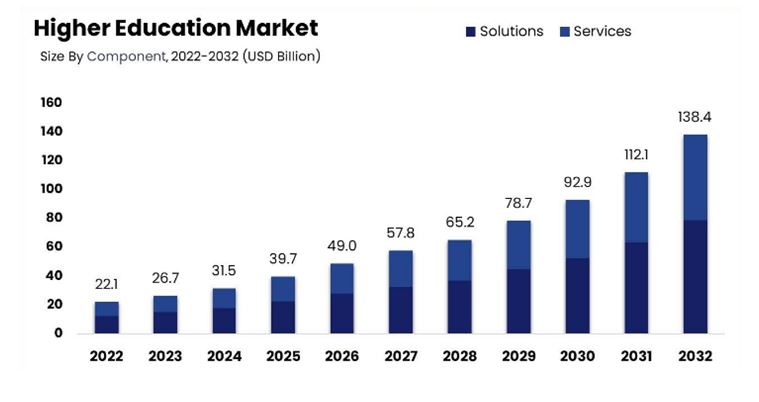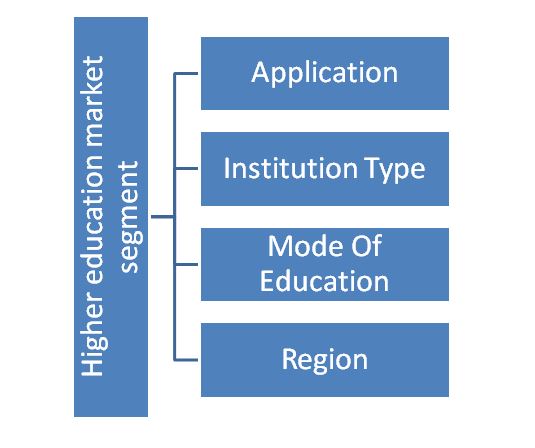In 2022, the higher education market reached USD 22.1 billion, with forecasts indicating substantial growth to USD 138.4 billion by 2032, representing a compound annual growth rate (CAGR) of 20.7%. Higher education encompasses postsecondary education provided by universities, colleges, and other institutions.
Higher education institutions, including colleges, universities, technical institutes, and vocational schools, offer diverse educational opportunities, each with unique educational objectives. But why higher education?
- Research Opportunities: Universities and research institutions play a pivotal role in advancing knowledge through student and faculty engagement in various research initiatives across disciplines.
- Degree Programmes: Higher education offers bachelor’s and master’s degrees across a wide array of fields such as arts, science, business, engineering, and law. These degrees aim to provide in-depth subject-matter expertise.
- Personal Growth and Character Development: Attaining higher education from esteemed institutions fosters personal growth and character development. Students develop critical thinking, leadership, communication, and soft skills, along with cultural understanding.
- Globalisation and Mobility: Higher education has witnessed globalisation, transcending geographical boundaries. Students and faculty can easily pursue educational opportunities worldwide, fostering global interactions and cultural exchanges.
- Professional Development: Higher education equips students with enhanced skill sets, knowledge, and experiences, facilitating their professional development and advancement in various fields.
As the higher education landscape continues to evolve, these factors underscore its significance in shaping individuals, societies, and the global workforce.

New Reforms in the Higher Education Sector:
Amidst the expansion of the higher education market, concerns surrounding affordability, student debt, quality educational programmes, and accessibility persist. To address the evolving demands of labor markets, several reforms have been implemented:
- Online Education: The landscape of higher education has undergone a significant transformation with the advent of remote and online learning. Virtual classrooms, massive open online courses (MOOCs), and e-learning platforms have revolutionised lifelong learning, making it more accessible and flexible.
- Lifetime Learning: There is a growing emphasis on lifetime learning, where individuals can continuously acquire new skills and knowledge to adapt to changing circumstances and career requirements. This approach enables students to stay relevant and competitive in dynamic job markets.
The Global Higher Education Market: Segmentation Analysis:

The global higher education market is segmented on the basis of applications, institution type, and mode of education.
Application Segmentation:
In 2022, the market was categorised into undergraduate, master’s, and Ph.D. programs. Undergraduate degree education dominated the segment, accounting for 56% of the total revenue. Over the forecast period, undergraduate student numbers are projected to reach 300 million, depicting a sharp growth. Additionally, there will be growth in Ph.D. enrolments during 2023–2030.
Institution Type Segmentation:
The market is further categorized into public and private institutions. Public or state-owned institutions were dominant in 2022 due to their conventional approach and higher quality of education. However, during the period 2023–2030, private institutions are expected to experience the fastest growth, with significant expansion in multiple locations.
Mode of Education Segmentation: Mode of education includes two options that are offline and online options. In 2022, offline education held a widespread share in terms of revenue and enrolment, driven by conventional educational methods and student preferences. However, trends indicate a sharp increase in the online education segment due to internet penetration, advancing technology, and evolving trends in the online education market.

